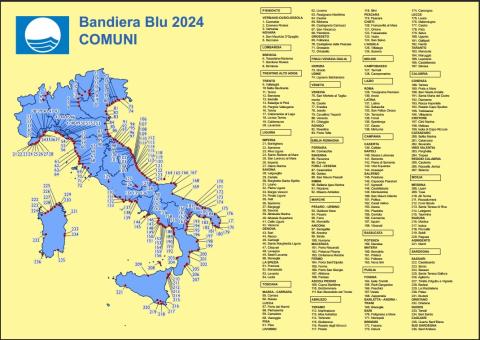BLUE FLAGS FOR BEACHES AND TOURIST MARINAS
Data aggiornamento scheda:
The Blue Flag remains one of the most prestigious international environmental labels for beaches and tourist marinas. In 2024, Italy confirms itself as one of the nations with the highest number of awards, totaling 485 Blue Flags for beaches and 81 for tourist marinas, demonstrating a continuous commitment to sustainability in coastal and lake tourist destinations.
ELECTRICITY CONSUMPTION IN THE TOURISM SECTOR
Data aggiornamento scheda:The indicator illustrates electricity consumption in the tourism sector, identified by the ATECO category "Accommodation and Food Service Activities". In 2023, this sector accounted for 4.2% of total electricity consumption in Italy. When considering only accommodation activities—such as hotels, campsites, and other short-term lodging facilities—this share drops to 1.5%. In 2023, within the "accommodation" subcategory, 83.8% of electricity consumption was attributable to "hotels and similar establishments".
ENVIRONMENTAL PRESSURE OF MAJOR TOURISM INFRASTRUCTURES: MARINAS
Data aggiornamento scheda:Tourism infrastructures, particularly marinas, exert significant pressure on marine and coastal environments. This indicator monitors potential environmental pressure by considering the total number of berths and their distribution per kilometer of coastline across Italian regions. The 2022 data indicate an increase in the number of berths compared to 2021, with a higher concentration in certain regions, implying greater environmental impact on local ecosystems.
TOURISM INTENSITY
Data aggiornamento scheda:The indicator monitors the impact of tourism on the territory in terms of both volume (arrivals) and the burden placed on the area (overnight stays). It highlights how some regions and autonomous provinces experience high "arrivals per inhabitant" and "overnight stays per inhabitant" ratios, such as Valle d'Aosta (10.9 and 30.0) and the Autonomous Province of Bolzano (15.7 and 67.2), compared to the national average of 2.3 and 7.6, respectively. In 2023, all values increased and surpassed those recorded in 2019.